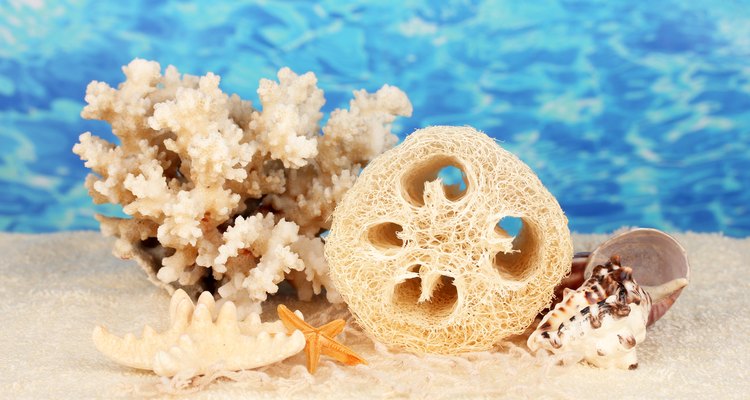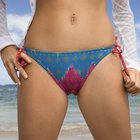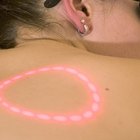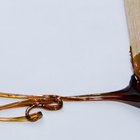
Gracie Wilson/LIVESTRONG.com
The sun is out, happy hours are buzzing and half-naked women are frolicking on beaches around America — which means grooming the sweet spot is the beauty priority of the season.
Whether you go au naturel, shave, wax or trim, these proper techniques will make the grooming experience less painful (and shameful) and keep your lady parts healthy.
Here’s the main trick to keep your bikini line from going rogue: No matter what method you use, the key to getting the best grooming results is keeping skin soft.
Follow more tips below for a confident, sexy summer of the land down under.
Prep and Pamper
The first important step is making sure to exfoliate the area to help remove dead skin a day prior to treatment (whether waxing or shaving). Dead skin can block hair follicles, causing ingrown hairs and those annoying bumps and redness that we slyly try to hide at pool parties.
Exfoliating the day prior to treatment is better than the day of as there can be small abrasions from exfoliating left on the skin that can cause more irritation and cuts. The important thing is helping to "relax" the hair with no additional skin tenderness. Believe it or not, it could be the difference between a pleasant and unpleasant experience.
You can also keep the area smooth and bump-free by using cleansing products with panthenol, which locks in moisture for a silky-soft finish.
The second important step is cleansing the area right before grooming to ensure that your skin is soft and to wash off dirt and bacteria that may cause irritation.
Try to use pH-balanced bodywashes that use gentle coconut cleansers (rather than sulfates) along with hot water to open the hair follicles and decrease trauma when waxing or shaving. Such as the SweetSpot Labs Gentle Wash in Neroli Mandarin which is pH-balanced and uses coconut and apricot kernel oils to keep skin clean and soft.
So what’s the deal on grooming techniques? Which one is the best? Truthfully, there is no one-size-fits-all answer! There are many options to choose from for many preferences — including choosing not to groom at all.

jul14ka/Adobe Stock
Au Naturel
Many women feel very comfortable with their natural hair growth in the pelvic area and do not bother with hair-removal practices. pubic hair is there for a reason: It provides a cushion against friction, keeps bacteria from entering the vagina and causing any vaginal or urinary infections and decreases the risk of STD transmission. So feel free to keep the hair and use products that will keep your hair soft. Panthenol is a great natural ingredient that softens both hair and skin!
Shaving
Shaving only removes the hair at the surface of the skin. Because there is still active hair growth in the hair follicle the hair is still growing underneath. Shaving, unlike waxing, cuts off the hair at mid-shaft rather than removing it entirely. This makes hair appear to grow back thicker, when in fact it’s the same size all along.
Depending on how often you shave, it’s important to change out your razor frequently to make sure the blades you’re using are sharp and to minimize the potential growth of bacteria, mold and rust on the blades. If you shave daily, you should switch out your razor once a week (yep, you read that right), this is especially important because the blade can dull quickly over a week's use. If you shave two to three times a week, biweekly is sufficient.
Plus, with a new razor blade you decrease the potential for nicks, cuts and irritations that can more easily happen with a dull or rusty blade. If using a razor is somewhat scary for you, consider removing the hair over your labia with a personal trimmer.

Syda Productions/Adobe Stock
Razors that have good, sharp blades and are not overly pricey include Schick Hydro Silk Disposable, BIC Soleil Glow and Noxzema Spa Shaving.
Be sure to shave against the hair growth direction for a closer shave. However, women who are prone to ingrown hairs should shave with the direction of hair growth. Also, shaving should be the last step in your shower routine because hot water and bodywash will help soften skin and hair — giving you a closer shave.
Waxing
This can be done DIY or by a professional. However, I recommend starting with a professional so you can familiarize yourself with the process (and for a quicker, less painful experience).
Waxing pulls the hair from the root of the hair follicle underneath the skin and is less painful when you have optimal hair length. So before waxing make sure your hair is about one-fourth to three-fourths of an inch long. If hair is longer, trim it to a shorter length with scissors. Also, avoid retinoid creams for about two to five days before waxing because your skin becomes more sensitive and more prone to injury.
Whether done at home or by a professional, make sure you properly prep by cleansing and exfoliating at least a day in advance.

Africa Studio/Adobe Stock
You can also use a hot compress prior to waxing to help smooth the skin and soften the follicle to decrease the trauma to the area and decrease the pain. If you’re waxing yourself, make sure to use clean linen cloth strips and disposable wooden applicators.
If you have a low tolerance for pain, consider taking a pain medication (such as Ibuprofen) 30 to 60 minutes beforehand. This will also help minimize inflammation.
After waxing, treat the area gently by using a soothing aloe gel or cold compress externally, and try wearing cotton underwear afterward to allow the area to “breathe.”
Laser Hair Removal and Electrolysis
If you have tried many types of grooming and are looking for the ultimate permanent answer, you will find it in laser or electrolysis hair removal.
What are the differences? Laser therapy is only used on those with light skin and dark hair. Electrolysis, however, can be used on anyone regardless of their skin or hair color because it attacks the hair follicle itself rather than the pigment in the hair. Laser removal sessions are quicker because the device can cover a larger surface area, while electrolysis is a more tedious session, with each hair follicle needing to be treated at the root.
What Do YOU Think?
What is your preferred method of grooming and why? What is your favorite razor? Do you have any tricks up your sleeve on how to achieve a soft and clear bikini line?
Related Articles

How to Make Your Bikini Line Look Better

Waxing vs. Shaving Legs

What Does a Brazilian Bikini Line Look ...

Full Bikini vs. Brazilian

Skin Care for the Bikini Area

How to Pluck Pubic Hair

What Is a Good Way to Get Rid of Hair ...

How to Prepare for Laser Bikini Hair ...

How to Soothe Waxed Skin

How Long Should You Grow Out Leg Hair ...

How to Prepare for a Brazilian Wax

The Best Ways to Get Rid of Pubic Hair

How to Shave the Bikini Line With No ...

How to Get Rid of Mustache Shadow on ...

Brazilian Waxes & Ingrown Hairs

How to Not Get Stubble When Shaving ...

Shaving a Goatee Under the Chin

How to Get Rid of Razor Bumps in the ...

Proper Way to Use a Foil Shaver

How to Stop Hair From Growing at the ...
Writer Bio
Jessica Shepherd, M.D. is a women's health expert and also the founder of Her Viewpoint, an online women's health forum. As an OB/GYN, she practices at the University of Illinois at Chicago and also serves as the Director of Minimally Invasive Gynecology. Dr. Shepherd has written in various journals including Women's Day, Women's Health, Heart and Soul, Best Health, Essence and WebMD.